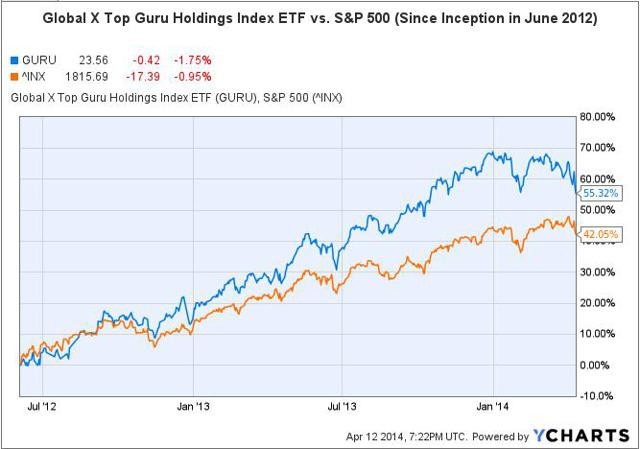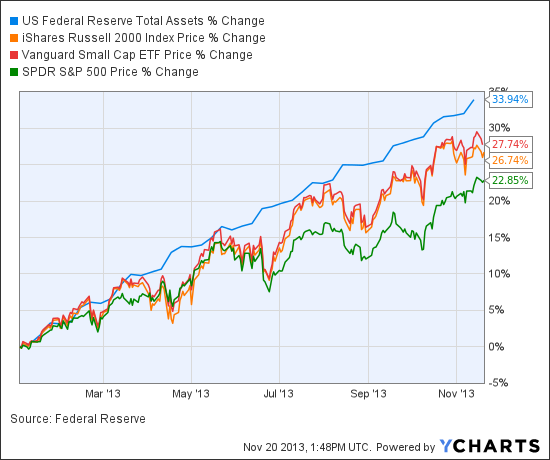ETFs That Can Outperform The S&P 500
Post on: 8 Апрель, 2015 No Comment

Summary
- The SPIVA Scorecard from 2013 showed that most active funds underperformed the market index in the past three and five year periods.
- There are ETFs that can outperform the S&P 500 in the long run, but they have different investment styles, risk levels and volatility.
- After comparing different types of ETFs, I discovered that small and mid-cap ETFs have the biggest chances to outperform the S&P 500 in the long-term.
Exchange-traded funds (ETFs) are one of the best investment vehicles for investors because their expense ratios are much lower than index mutual funds and actively managed mutual funds, they are usually more tax-efficient, they are well-diversified, and they are very easy to manage. They can be traded like stocks and investors only need to pay a small trading fee to buy them via their discount brokers. Most ETFs are passively managed and are created to track market indexes-such as the S&P 500.
Another compelling reason that makes ETFs great investments is that most actively managed funds underperform the market in the long-term.
According to the SPIVA Scorecard that was published for mid year 2013, 59.58% of active funds underperformed the S&P 500 in the past one year performance, 85.95% underperformed in the past three years performance, and 79.46% underperformed in the past five years performance.
If most actively managed funds underperform the market in the long-term, would it not make sense for investors to simply invest in ETFs? At this moment, I believe that the benefits of ETFs outweigh the benefits of most actively managed funds.
Another question is whether there are ETFs that can outperform the S&P 500. I believe that there are ETFs that can outperform the S&P 500 in the long-term without active management, but they have different investment styles, risk levels and volatility.
ETFs that Can Outperform the S&P 500
After comparing different types of ETFs, I discovered that small and mid-cap ETFs have the biggest chances to outperform the S&P 500 in the long-term. For example, the Vanguard Small-Cap (NYSEARCA:VB ) and the Vanguard Mid-Cap (NYSEARCA:VO ) have consistently outperformed the S&P 500 in the past 10 years (see image below).

In comparison, the Vanguard growth ETF (NYSEARCA:VUG ) has only outperformed the S&P 500 by a smaller amount while the Vanguard value ETF (NYSEARCA:VTV ) has trailed the S&P 500 during the same period (see image below). If history does repeat, the Vanguard growth ETF should be able to outperform the S&P 500 during a bull market period because the ETF tracks the performance of the largest growth stocks in the U.S.
Small and mid-cap ETFs tend to outperform the S&P 500 in the long-term because the underlying companies are much smaller in size and because their growth prospects are generally higher. However, their risks and volatility are also higher. They tend to have larger losses during a bear market (e.g. 2008 Financial Crisis) but outperform the S&P 500 during a bull market (e.g. between 2009 and the time of writing this).
How to Manage Risks
If you are to invest in small and mid-cap ETFs, one way to reduce their risks is to invest a fixed amount of money in them on a monthly or a quarterly basis (aka dollar-cost averaging), so you can reduce the risk of investing a large amount of money at the wrong time.
If there is a large market correction, you can also increase your monthly investment amount, so you can buy more shares at lower prices. This is an important strategy because there is a greater margin of safety when you invest in equity ETFs during a market downturn.
It is also important to invest in ETFs for the long-term unless you are very good in market timing. The reason is that the market can drop unexpectedly, and a bear market usually takes a few years to recover.
The Bottom Line
Small and mid-cap ETFs (e.g. Vanguard Small-Cap and Mid-Cap ETF) have the biggest chances to outperform the S&P 500 in the long-term because the underlying stocks are much smaller and because their growth prospects are usually higher. The downside is that their risks will also be higher. But if you can invest in them for the long-term and use dollar-cost averaging to reduce risks, you should be able to outperform the S&P 500 in the long run.
Source: S&P Indices Versus Active Funds (SPIVA) Scorecard, Vanguard ETFs and YCharts.
Disclosure: I have no positions in any stocks mentioned, and no plans to initiate any positions within the next 72 hours. I wrote this article myself, and it expresses my own opinions. I am not receiving compensation for it (other than from Seeking Alpha). I have no business relationship with any company whose stock is mentioned in this article.
Additional disclosure: I have no business relations and do not receive compensation from Vanguard.














